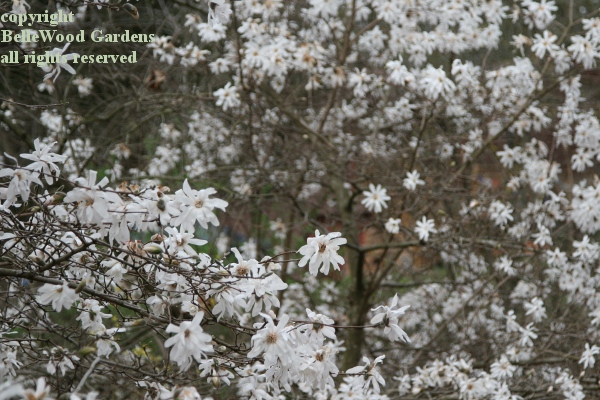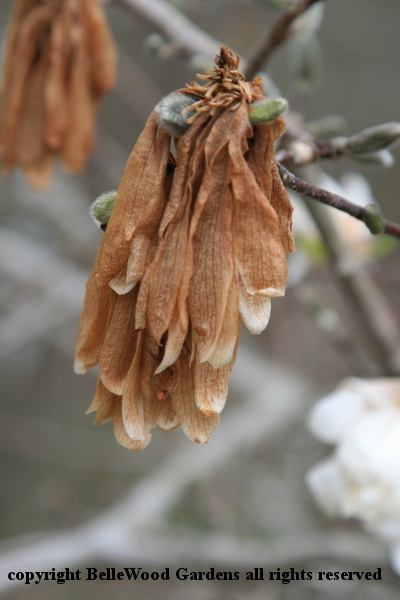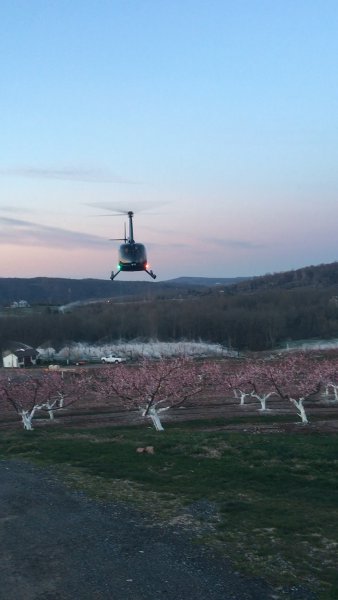
.
If you have any comments, observations, or questions about what you read here, remember you can always Contact Me
All content included on this site such as text, graphics and images is protected by U.S and international copyright law.
The compilation of all content on this site is the exclusive property of the site copyright holder.
If there is one thing that gardeners discuss, endlessly, it is the weather. Regardless of where or why they dig in the dirt the options for complaint might be: it is - too hot, too cold, too wet, too dry . . . . The winter of 2015 / 2016 was relatively mild with little snow. Granted, when it did finally snow with enthusiasm we got two months of snow in 24 hours. Poor distribution. But not very cold.
Temperature has a powerful influence on when temperate plant growth will begin. Many plants enthusiastically sprang into earlier than typical growth. Maple syrup season began very early this year. Forsythia were in flower in March. Ditto magnolias. And flowering cherries. Technically, according to our 6B hardiness zone here in New Jersey we are not frost free until early May. That's fine. What is not fine is what happens when prematurely flowering trees meet normal cold temperatures.
Consider this - daytime temperatures of 76 degrees Fahrenheit on 9 March, 78 degrees F. on 10 March, fluctuations into 50s and 60s and - no fooling - a bounce up to 79 degrees Fahrenheit on 1 April. Then it got cold, dipping down to 24 degrees F. the night of 5 / 6 April.

On 31 March the Magnolia stellata at BelleWood Gardens were wonderfully in bloom.

And just a week later this is what they looked like.
Understand that the magnolias are hardy little trees. They will leaf out and grow just fine. But their flowers are done for. This becomes an issue where the flowers are a precursor to something important, like fruit. No flowers, no fruit. When sweet cherries and peaches are in full bloom, for example, temperatures of 24 / 25 degrees Fahrenheit for more than 30 minutes will kill 90% of them. What to do?
Something as simple as a sheet thrown over the plant will protect from frost damage. Easy to do for dahlias in the fall, difficult for a tree in early Spring. And what do you do with an orchard? Well, there was a time when citrus orchards in California and Florida would use smudge pots. Wasn't the heat they gave off that prevented frost damage. It was soot and and other noxious polluting particulates. Not currently in use, I believe.
Water works. It goes like this: when water changes state - gas to liquid to solid - there's energy involved. Heat added to ice changes it to water. Water changing to ice releases latent heat, warming the surrounding air. This technique has limits. It is only useful if you keep the sprinklers going so the ice stays wet. Then the ice temperature will stay at 32 degrees Fahrenheit. If the ice dries and water starts to evaporate it will get colder than the air temperature as it evaporates. This method has a relatively narrow useful range that can protect down to 24 degrees Fahrenheit if there is a light breeze, even slightly lower temperatures in still air. And once started, the sprinklers must be kept in operation until after sunrise and temperatures are reliably above freezing or there will be more damage than if they had not been turned on.

image courtesy Platinum Helicopters LLC all rights reserved
Image of sprinklers in operation at Phillips Farms, taken from inside the helicopter
by Evan Van Gilson, chief pilot and co-owner of Platinum Helicopters LLC
Cold, still air does the most damage to plants. Calm, clear skies, radiation loss and frost / freeze conditions result. An inversion layer holds the cold air close to the ground. What to do, what to do . . . . use a fan to stir things up, bring the warmer air down to mix with the colder air and raise the temperature. A frost fan looks more like a power generating wind turbine than anything you'd have around the house. Envision a steel tower at least 30 feet tall with a couple of 15 foot fans mounted on top that rotate around the tower. One machine can protect 8 to 10 acres, with a rise of 3 to 5 degrees Fahrenheit close to the machine and dropping to 2 degrees differential at the perimeter of the area. Their effect is negated under windy conditions.
Another method of frost prevention uses helicopters slowly patrolling over the orchard during a freeze event, the rotors pulling the warmer air in a temperature inversion down to the colder surface.
There are two farms here in Hunterdon County, New Jersey that use helicopters to protect their orchards under these adverse conditions, Phillips Farmsin Milford, and Melick's Town Farm and apple orchard in Oldwick, Bridgewater and Califon, New Jersey.

image courtesy Platinum Helicopters LLC all rights reserved
One of Platinum Helicopters LLC helicopters over
Phillips Farms peach trees on the morning of 6 April.
A helicopter can cover a large area, up to 40 acres or more per helicopter, depending on the helicopter size and weight and on the weather condition. I found a suggestion that pass frequency vary between 30 to 60 minutes, depending on weather conditions, and that optimal flying height is rather close to the ground, commonly between 65 and 100 feet. No doubt one of the reasons that Platinum Helicopters send a pair of pilots in each copter for these midnight / 1:00 a.m. to 7:30 a.m. flights.
The magnolias are looking very sad. No helicopters here at BelleWood Gardens. Outside water still turned off so no sprinklers. But I can look forward to peaches at the farm stands next summer.
Back to Top
Back to April 2016
Back to the main Diary Page